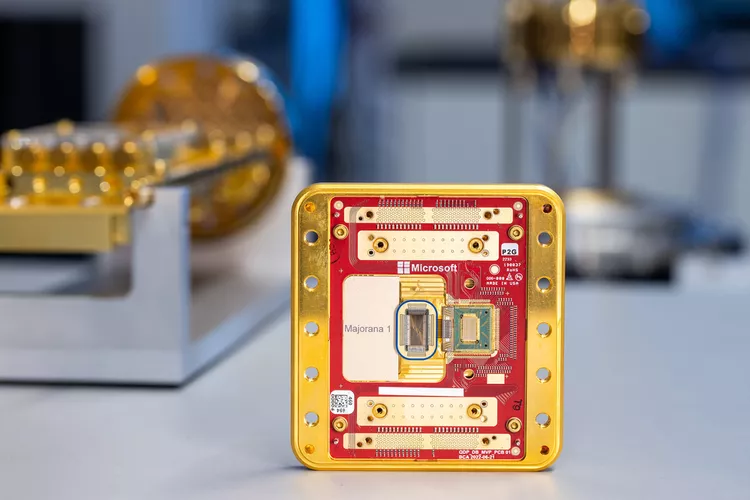Contents
Introduction:
On February 19, 2025, Microsoft launched its first quantum computing chip, named “Majorana 1.” This chip is based on a novel state of matter called a topoconductor, a material composed of indium arsenide and aluminum, enabling the observation and control of Majorana particles. This leads to more stable and scalable quantum bits (qubits).
Although other companies such as Google and IBM have also been developing quantum computing chips, Microsoft’s Majorana 1 is expected to have an advantage in terms of stability and resistance to interference due to its unique topological architecture. Microsoft has stated that the Majorana 1 chip currently contains eight topological qubits, with plans to scale up to one million qubits in the future. This breakthrough could reduce the time needed to develop quantum computers capable of solving industrial-scale problems from several decades to just a few years, ultimately surpassing the combined computing power of all existing classical computers.
Why Is Microsoft Releasing Majorana 1 Now?
First, Microsoft is not the first tech giant to enter the quantum computing race. Companies like Google, IBM, and Intel have been actively developing their quantum computing technologies for years. Microsoft’s quantum computing research began in 2005, following the path of topological qubits rather than traditional superconducting qubits. From 2022 to 2024, Microsoft successfully observed stable Majorana zero modes in laboratory experiments, indicating that its technological advancements had reached a commercially viable stage.
In the quantum computing sector, Google achieved quantum supremacy in 2019, and IBM has already released chips with more than 1,000 qubits, positioning both companies as industry leaders. Meanwhile, China’s quantum computing technology has been rapidly advancing, with companies like Alibaba and Baidu also making significant progress in this field. Microsoft needed a flagship product to prove it was not falling behind and to defend its market share. The launch of Majorana 1 today is not coincidental—it is the result of technological maturity, market competition, and industry trends converging.
Is Microsoft’s Majorana 1 a Revolutionary Breakthrough?
The launch of Microsoft’s quantum computing chip, Majorana 1, is indeed a remarkable technological milestone. However, at its core, this development signifies the beginning of a new era in computing rather than an outright revolution that will replace classical computing. It ignites a future full of possibilities, but there is still a considerable gap between quantum and classical computing today.
Quantum computing’s key advantage lies in its topological qubit design, which theoretically provides greater stability and resistance to interference. This enhances the scalability of future quantum processors. In particular, quantum computing shows promise in solving complex problems that traditional computing struggles to handle efficiently, such as large-scale optimization and machine learning. However, despite its potential, this technology is still far from fully replacing classical computers.
At present, quantum computing faces numerous challenges. First, quantum computers cannot operate as consistently or efficiently as classical computers. They rely on extremely low-temperature environments, typically close to absolute zero, which severely limits their applicability and feasibility for large-scale commercial deployment. Additionally, the computational power of quantum computers remains far from being applicable in everyday scenarios. Even as the number of qubits in Majorana 1 gradually increases, significant technological breakthroughs are still required before it can be deeply integrated into fields such as AI algorithm training and ASO (App Store Optimization).
However, this does not mean that quantum computing lacks future prospects. On the contrary, its true value lies in complementing and enhancing classical computing. In the future, we may see the emergence of a hybrid computing model that integrates quantum and classical computing. Instead of directly competing with classical computers, quantum computing will be used in specialized, high-performance applications such as molecular modeling, quantum cryptography, and large-scale data optimization.
Overall, Majorana 1 and similar quantum computers are leading us into the quantum computing era, but they will not immediately disrupt the classical computing world. The boundary between the two still exists—quantum computing serves as a potential accelerator for specific applications rather than a complete replacement. In the foreseeable future, quantum computing will remain a powerful complement to classical computing, merging with various innovative models and processes to help humanity tackle complex challenges in uncharted technological domains.
That said, even if Majorana 1 proves successful, it does not mean that quantum computing will instantly replace classical computing. Quantum computing still requires ultra-low temperature environments, making large-scale deployment difficult. Microsoft is likely to integrate Majorana 1 into its Azure cloud computing services, initially providing quantum acceleration rather than offering a fully independent quantum computer. While Majorana 1 is a theoretical breakthrough, it is still far from being a revolutionary game-changer. Microsoft will need to demonstrate its scalability over the next few years; otherwise, it risks facing skepticism from the market.
The Significance of Majorana 1
From a technological perspective, Majorana 1 leverages the unique advantages of topological qubits, which theoretically offer significantly improved noise resistance and stability. This is a crucial breakthrough, as quantum computing has long struggled with maintaining coherence and minimizing errors. However, this advancement has been achieved under extremely demanding physical conditions—today’s quantum computers must operate in ultra-low temperature environments near absolute zero to maintain the purity of quantum states and the stability of their systems. This stringent requirement results in high hardware demands and operational costs, keeping quantum computing far from large-scale commercialization.
In contrast, classical computing technology has undergone decades of development and is now highly mature. Whether in terms of energy efficiency, stability, or cost-effectiveness, traditional semiconductor technology still holds an irreplaceable advantage. Classical computing can function efficiently in normal-temperature environments, supporting the entire global information infrastructure. Therefore, while the concept and experimental results of Majorana 1 are exciting, they do not suggest that we can abandon classical computing anytime soon. Instead, this new development lays the foundation for a future in which quantum and classical computing coexist in a hybrid model.
In other words, Majorana 1 represents an exploratory path in technological development. It has the potential to bring groundbreaking advancements in solving highly specialized problems, but it also highlights the current limitations and challenges of quantum computing. Transformational technologies like this often require long-term refinement and industrial optimization before they can become part of everyday life and serve as powerful tools for solving complex global challenges.
Conclusion
Majorana 1 and similar quantum computing technologies are ushering us into the era of quantum computing, but they will not immediately upend the classical computing landscape. The boundary between quantum and classical computing remains distinct. Rather than replacing classical computing entirely, quantum computing will primarily serve as a potential accelerator for specific applications. While China remains in the second tier of this field, DeepSeek has been rapidly catching up. However, when it comes to quantum computing chips, the gap is still significant.



